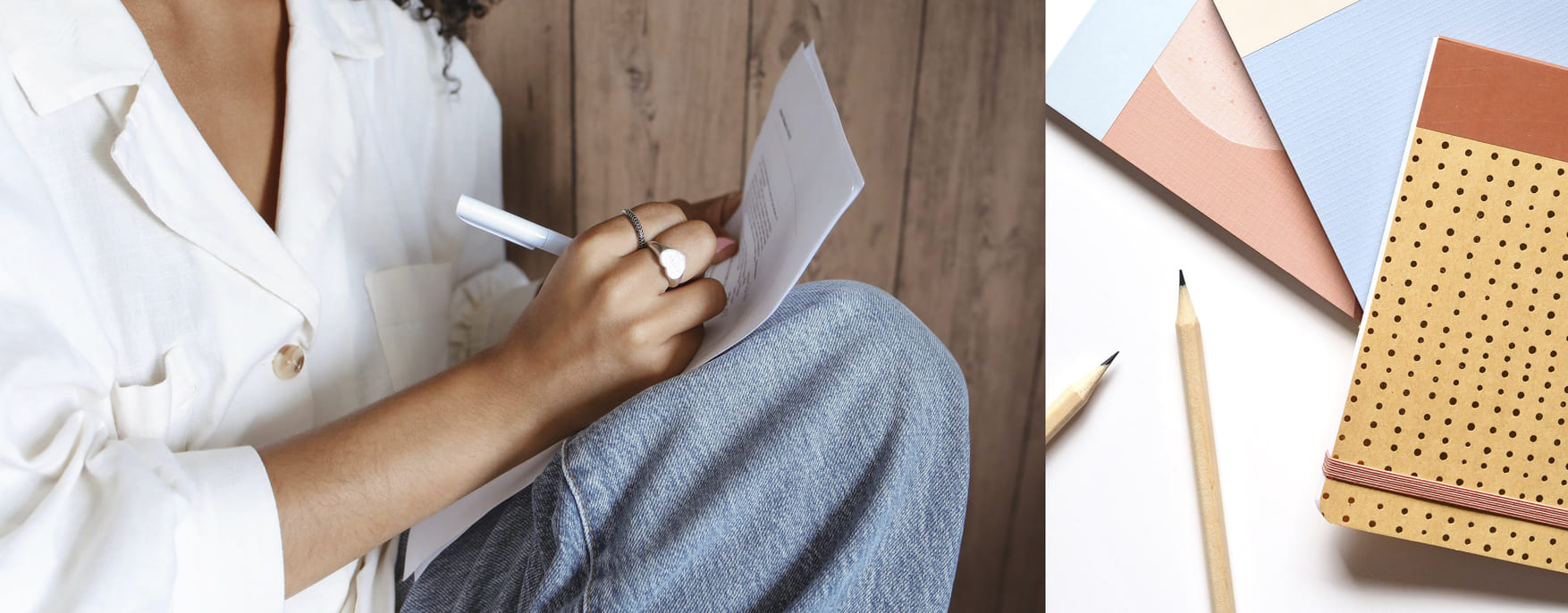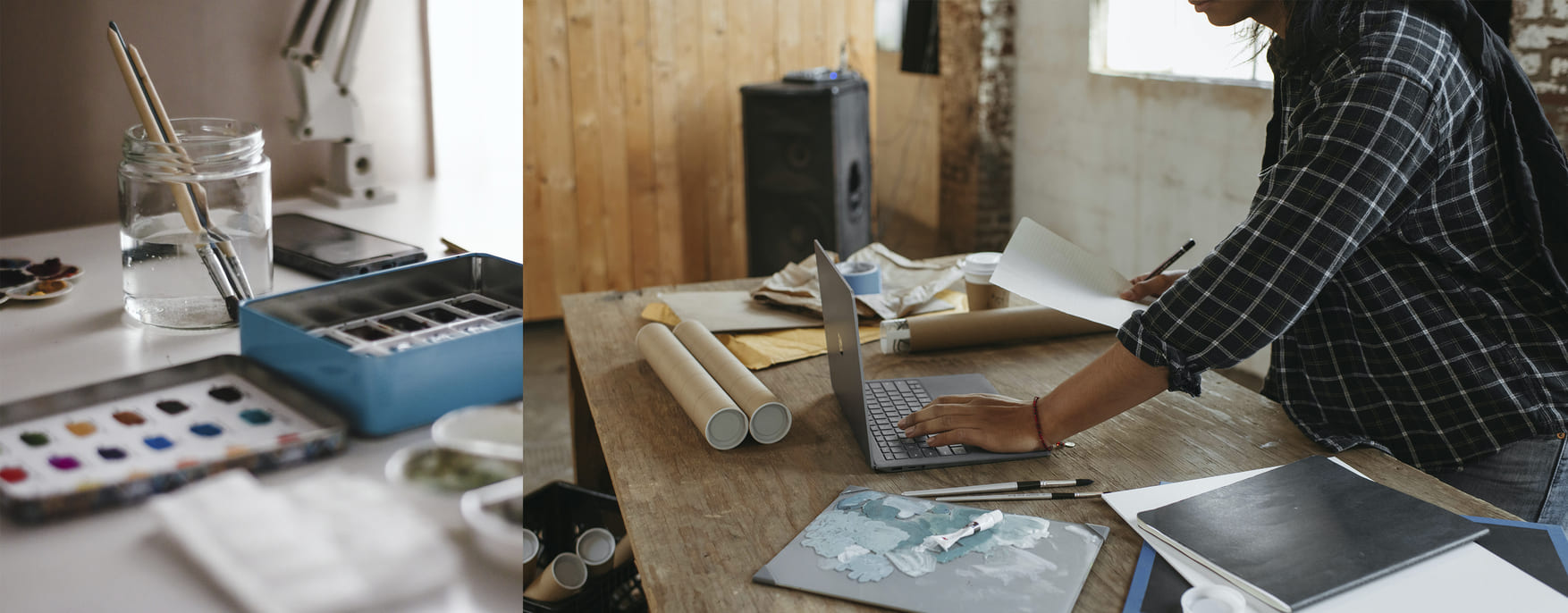There is a popular saying we all have accepted as a truth: “A picture is worth a thousand words”. But what happens when we want to talk about the picture, and what we think of it, what it made us feel, what it reminded us of? For visual artists, words are a tool needed to effectively communicate what they do, and spark conversation around their work.
For artists and art businesses alike, mastering the art of writing about their creations is a key communicational asset that can help them improve how they present their work to their target audience.
Good communication can elevate a pitch for exhibitions and events, strengthen the connections built through networking, and drive more traffic to a website, generating opportunities for more art sales or commissions.
Keep reading to find helpful guides, prompts, and even “fill in” forms to improve your art writing skills.
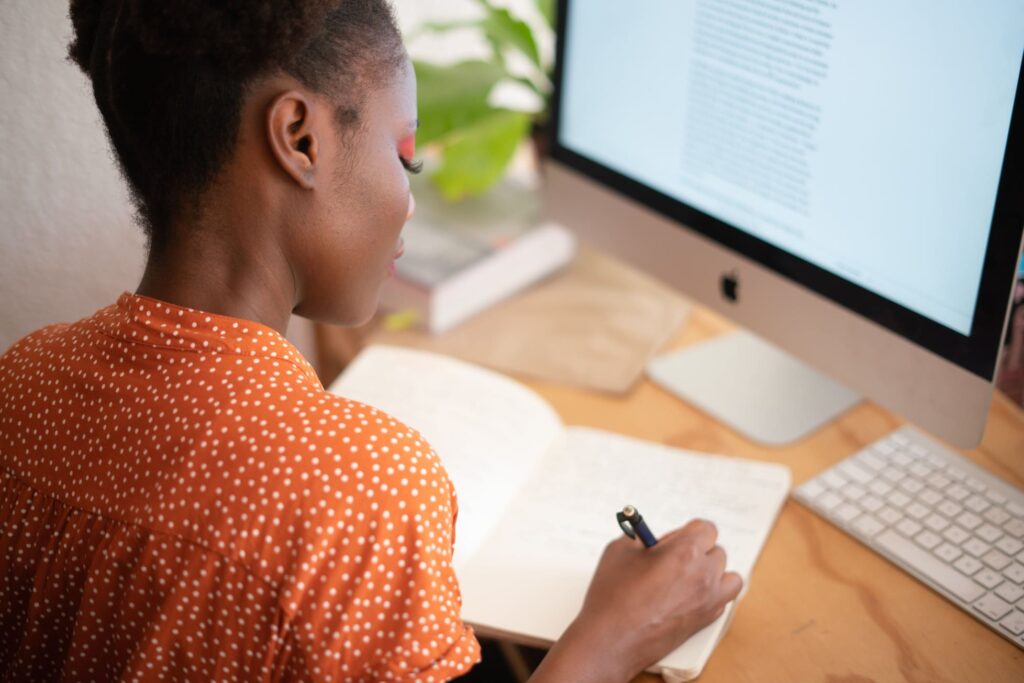
Contents
Why polishing your writing skills is key to growing as an artist or art business
Language helps us elaborate on a subject and create a connection with the reader. It’s also a tool to focus people’s attention on particular characteristics and even, to drive them to follow an action, like moving forward in the art buyer’s journey you have designed for people that have shown interest in your work.
Writing is an indispensable skill in a world where the digital and physical spaces are intertwined. Creative writing is an essential part of any art marketing strategy or communication plan that aims to promote your work and get it noticed online or offline.
Plus, there are several instances where you will need to use your writing skills as an artist, for example:
-Creating your own business or professional website.
-Writing a blog post to engage with your audience.
-Coming up with a creative caption for your social media posts,
-Improving your artwork descriptions for exhibitions or e-commerce websites.
-Describing your virtual exhibition or online art show.
-Crafting an artist statement or an exhibition statement.
-Updating your artist resume.
-Crafting an exhibition proposal for a gallery.
-Writing invitations for an art show.
-Creating an art or artist newsletter or any email communication.
-Submitting your work for art fairs.
-Applying for scholarships, awards, grants, and residencies.
-Filling out your application for teaching opportunities.
-Drafting an art business plan.
How to break free from “writer’s block” as an artist
Have you ever faced the fear that only a blank canvas can produce? The same thing might happen when you face a blank page and the pressure to write. It happens to everyone, even the most prolific writers.
Writer’s block is only a period when your creative flow finds a roadblock, and there are many ways to break from it. Here are some ideas to spark your imagination and get you into writing:
–Record yourself: use the recording app on your mobile phone and freely talk about the subject you want to write about. After, you can listen to yourself, take notes, and turn them into text.
–Talk to a friend: a really good prompt to get you writing about any subject is leaving aside the pressure of sounding “artsy” or “professional”, and telling whatever you want to express in your own words like you would do in an intimate conversation with a friend.
–Use AI tools: technology is always there to help you, if you don’t know where to start you can use AI software to draft general ideas or even the structure of the text. Here are some proven ChatGPT prompts to write everything from an artwork description to an email.
–Feed your creativity: remember that Pablo Picasso quote, “Inspiration exists, but it has to find you working”? Well, sometimes, you need to work to get inspired. Read a book or an article about the subject you want to write about, listen to music that gets you in the right mindset, and even watch a movie or series that can give you a different point of view about that theme.

Prompts to write about your artwork
If you want to exercise the way you write about your art and what you create, following creative prompts is a good way to take you to new places and express yourself beyond the canvas (or medium of preference). Here is a list of prompts, ideas, or phrases to follow and get you writing about your art and create a first draft:
-I usually find inspiration in…
-I created this because…
-My primary emotion while making this was…
-My main influences are…
-I decided to work with this medium because…
-What you are looking at is…
-Through my creations, I’m investigating…
-I chose this subject because…
-The concept of this artwork came to me when…
-I could describe my creative process as
-What defines my body of work/collection/group of artworks is…
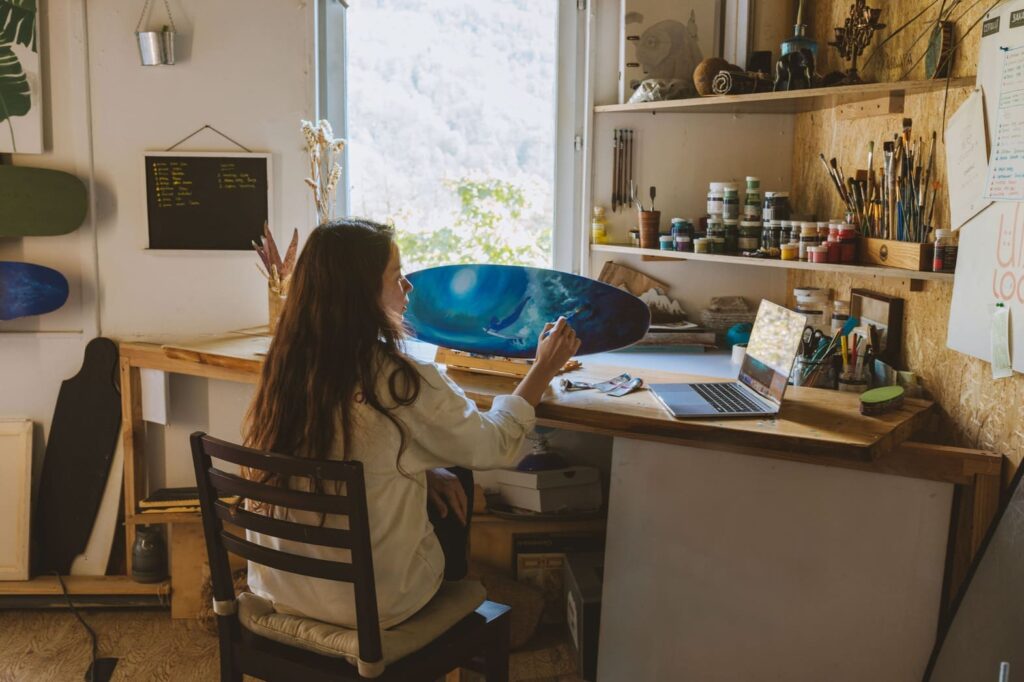
List of adjectives to write about your art
In their most simple definition, adjectives are words we use to describe characteristics of a certain subject. When you are writing about art, these are your tools to convey your impressions and ideas about a certain piece and communicate them to the reader.
Here is a list of art-related adjectives you can use to nurture your writing:
–About the style or genre: abstract, realistic, modern, contemporary, digital, postmodern, expressionist, mixed media, avant-garde, minimalist, pop art, pointillist, sculptural, surrealist.
–About the subject: portrait, self-portrait, still-life, landscape, symbolic, figurative, seascape, mythological.
–About the tone: expressive, symbolic, provocative, articulated, crude, defying, dramatic, dynamic, evocative, fragmented, gestural, harmonious, introspective, interactive, organic, subliminal, traditional, and experimental.
–About the colors: bright, saturated, muted, subtle, bold, monochrome, contrasting, tonal, complementary, balanced, vibrant, warm and cool.
Want to continue expanding your vocabulary? Check these lists of art terms every creative should know: Part 1 and Part 2.
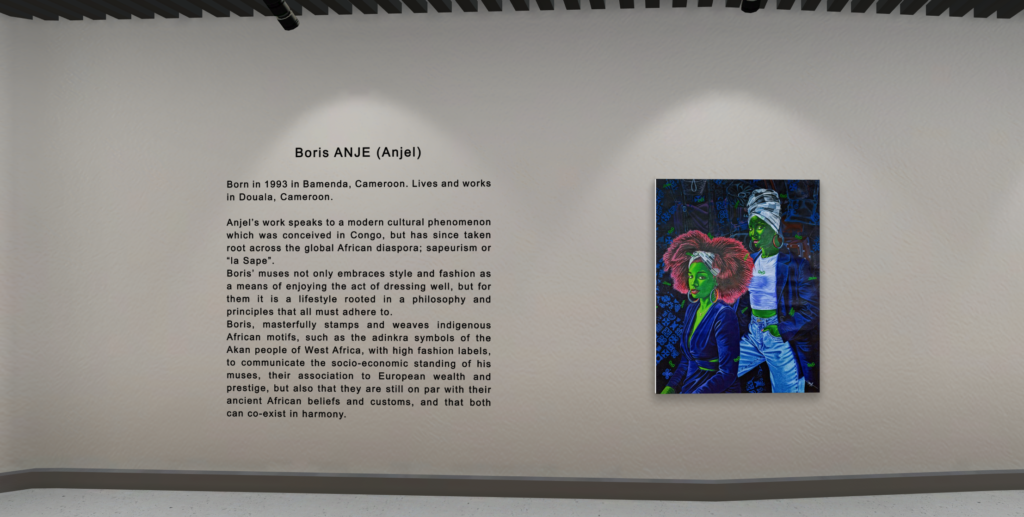
Start writing about your artworks: “fill in the blank” exercises
Now that you know how to find inspiration, and even have a list of prompts to motivate you to write, it’s time to work on different formats that you will certainly use for career or art business purposes.
Take these “fill in the blank” exercises as a first draft for any of the suggested content, you should always revisit them, and edit them before publishing. Remember to always check twice for grammar and spelling mistakes.
How to write an artist’s statement
Artist’s statements are usually the welcome message to their exhibitions and related publications. This text is also a way to present themselves and their work in summary, covering the main information any art lover or potential collector should know about their body of work and the person behind it at first glance.
Draft your first artist’s statement with this “fill in the blank” example:
“(Artist’s name) is a (type of artist) whose work delves into ideas of (broad topic). This exhibition brings together (types of artworks) that explore (narrow theme).”
How to write a press release
Part of the success of a virtual or in situ exhibition relies on a killer art marketing strategy to promote it. One of the main assets you will need to prepare to get media attention and assistance is a press release. You can start working on your own with this exercise, just fill in the blank spaces:
“Press release title: (name of artists) presents (name of exhibition) at (venue or website)
(Artist’s name or collective) presents their latest exhibition (name of the art show) based on (overall theme) in (name and location of the venue or link to website for online shows) from (opening date) to (full duration of the exhibition).
Dive into the work of (artist’s name), who lives in (location), where they have developed a body of work focused on (themes). They have a background on (education or experience) and have been the recipient of (awards, grants, and residencies).
With their latest work (artist’s name) explores (themes), focusing on (subjects) through the use of (medium or technique). The exhibition conveys (visitor’s experience) as a result of the work with (name of curator).
Contact information: email, phone number, website, and social media channels”
Check Gita Joshi’s prompts and recommendations for writing a press release on this exclusive ArtPlacer Academy webinar “How to craft an art show proposal”. Take the lesson by logging into your ArtPlacer account or starting your free trial.
How to write an artwork description
One of the most important texts you will write is an artwork description, this text is essential to drive traffic to your website, and e-commerce page, to get your art noticed by people looking for similar creations on social media. This is also used for gallery and exhibition purposes.
With this basic “fill in the blank” form, you will be able to quickly come up with a draft for a description for any artwork:
“(name of the artwork) created by (artist’s name) on (medium) with (technique or style). This piece details/captures (subject matter) inspired by (theme).”
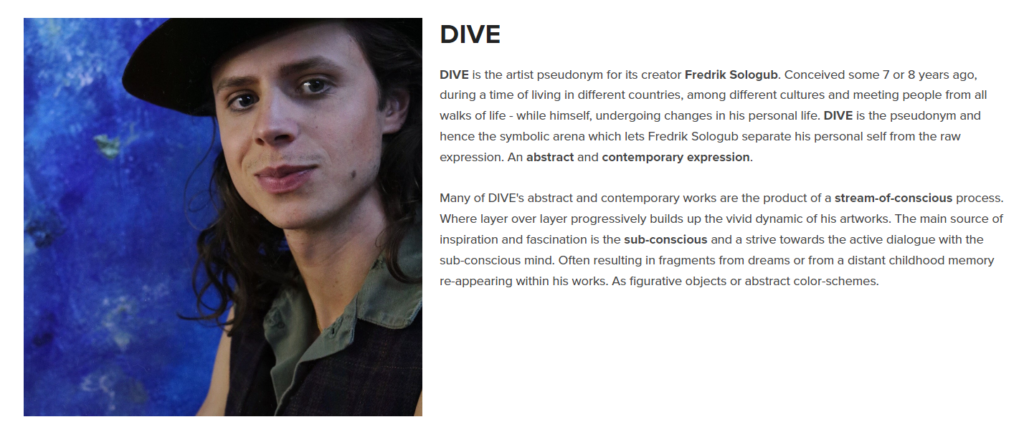
How to write a short bio for an artist
A short bio of you as an artist could be requested when applying for a job, when working on the “About me” page of your website, or the brochure of your next exhibition. This might be one of the texts that artists usually hesitate to write because it is difficult to summarize oneself in a few words, but with this “fill in” exercise you’ll come up with a starting paragraph for it.
Remember: your bio can be written in the first or third person depending on where you are going to present it and the tone you need to convey.
“(Artist’s name) is a (type of artist), based on/from (country, city). Born in (year), his/her/their work focuses on (main themes) which they explore through (preferred medium). They have a background in (expertise) having assisted to (academic background) and have worked with (previous commissioned work or general working background). They are inspired by (themes) and moved by the exploration of (subjects), they have been influenced by (general influences). They have exhibited their work in (previous exhibitions) and are the recipient of (awards, residencies)”
Now that you know the basics, you can start working on your texts and polishing your writing skills to better communicate your vision as an artist!
